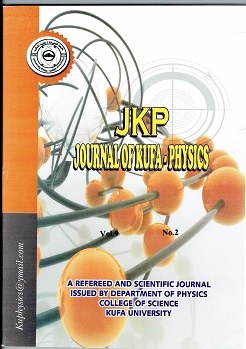Studying the Fluorescence Resonance Energy Transfer Between Two Dyes of Laser in an Aqueous Solution
DOI:
https://doi.org/10.31257/2018/JKP/2022/140201Keywords:
FRET, Acriflavine, Rhodamine B, HPCL WaterAbstract
In the past quarter century, applications of fluorescence resonance energy transfer (FRET) have grown dramatically, and the technology has become an indispensable tool in a wide variety of biological and biophysical domains. It is utilized, in order to acquire information on the conformational changes that occur in single molecules. By utilizing the fluorescence correlation spectroscopy, the pharmaceutical sector has also built huge fluorescence detection systems with extremely small sample sizes, reaching down to the level of single molecules. The fluorescence resonance energy transfer (FRET) between the two dyes, Acriflavine (Acf) and Rhodamine B (RhB), were examined in solution. Energy transfer was observed in fluorescence resonance imaging solutions containing Acriflavine and Rhodamine B with different concentrations of the acceptor RhB dye in the range of (1.5×10-5 M to 3.5×10-5M). Studies using Both UV–Vis absorption and fluorescence spectroscopy demonstrated that the two dyes, when dissolved in solution, appear largely as monomers.
Downloads
Downloads
Published
How to Cite
Issue
Section
Categories
License
Copyright (c) 2023 Yusser R.Mohammed, Waled S. Abdullwahab

This work is licensed under a Creative Commons Attribution 4.0 International License.
Journal of Kufa-Physics is licensed under the Creative Commons Attribution 4.0 International License, which allows users to copy, to create extracts, abstracts, and new works from the Article, to alter and revise the Article, and to make commercial use of the Article (including reuse and/or resale of the Article by commercial entities), provided the user gives appropriate credit (with a link to the formal publication through the relevant DOI), provides a link to the license, indicates if changes were made and the licensor is not represented as endorsing the use made of the work. The authors hold the copyright for their published work on the JKP website, while KJP is responsible for appreciating citation for their work, which is released under CC-BY-4.0 enabling the unrestricted use, distribution, and reproduction of an article in any medium, provided that the original work is properly cited.













